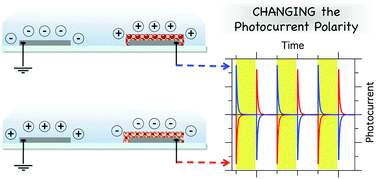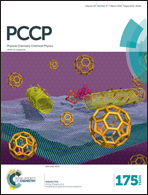Factors affecting the polarity and magnitude of photoresponse of transient photodetectors†
Abstract
The addition of an insulating layer (I) between one of the metal electrodes (M) and the photoactive semiconducting layer (S) in a standard organic MSM solar cell architecture changes the DC photocurrent response into a strong transient signal. Such a device can, in simple terms, be thought of as a charging voltage source (S) in contact with a charging capacitor (I). The magnitude of the photocurrent signal can be strongly enhanced through the intimate contact of the active layer with the insulating layer, if the various pre-polarizations within the device act synergically. In this study, the effect of the built-in potentials within the device on the polarity and magnitude of the photocurrent response is studied using the well-characterized bulk heterojunction blend system of poly(3-hexylthiophenone):[6,6]-phenyl-C61-butyric acid methyl ester (P3HT:PCBM) as the semiconductor layer, and an ionic liquid as the insulating layer. This study shows that the polarity of the response is not simply determined by the energy level difference of the outer electrodes, but through a delicate interplay of all the energy levels in the device. Furthermore, these observations could be reproduced for devices with a solid-state insulator layer, where possible side-effects of the ionic liquid, such as swelling and doping, could be considered absent.


 Please wait while we load your content...
Please wait while we load your content...